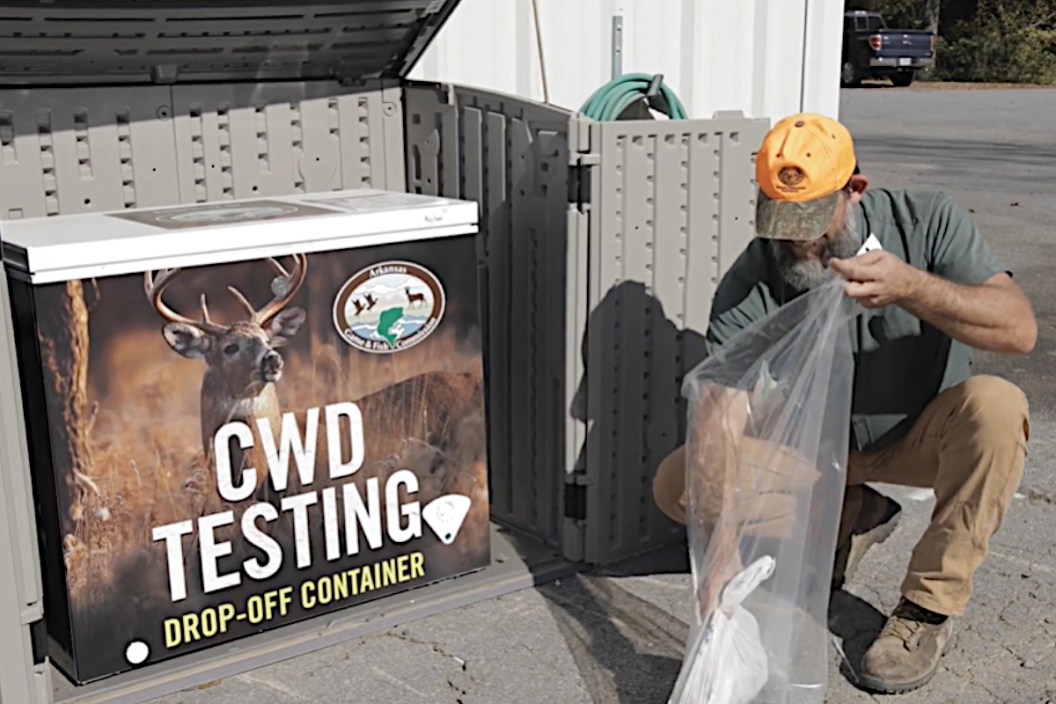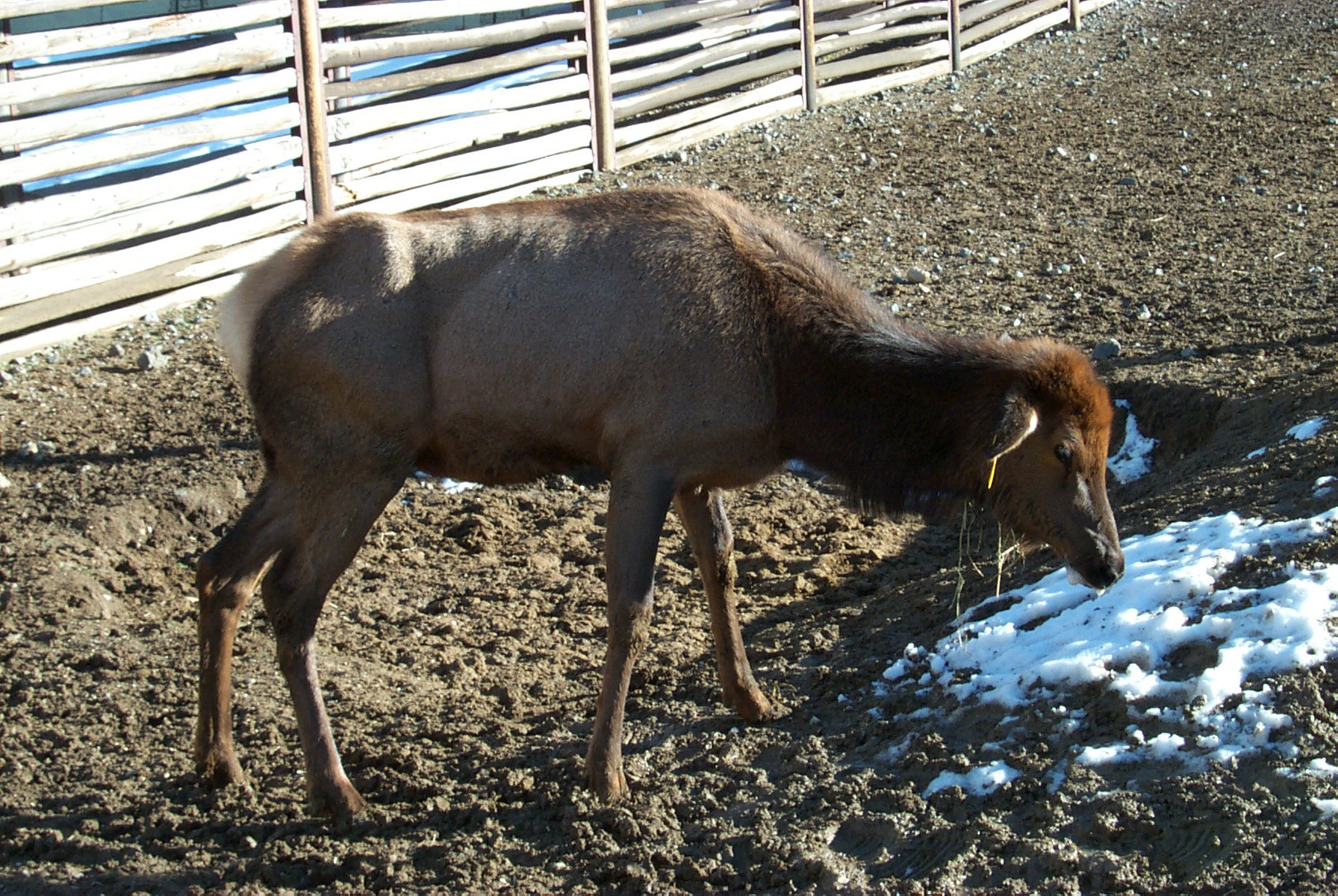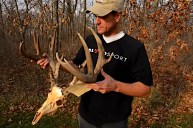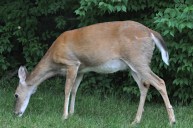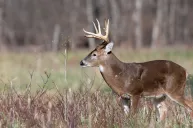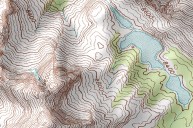Can chronic wasting disease affect humans?
Hunters new and old are likely familiar with chronic wasting disease or CWD at least to some degree. It is probably the deadliest infectious disease to spread through deer herds here in North America. This problem has similarities to mad cow disease and cases of CWD have been recorded in deer herds in at least 25 states now.
This prion disease is always fatal to the animals that catch it, but what about humans? After all, there are millions of deer hunters out there. Human exposure to the disease seems inevitable.
Today we will take a closer look at CWD and any possible effects on human health. It is important information to know as we look towards deer season and filling that freezer full of venison.
What is CWD? And what are the symptoms?
The first thing to know about this disease is that it is nothing new. CWD has been around since at least the 1960s when it was first observed in Colorado. The first infected animals were captive mule deer. The disease was not given its scary-sounding name until 1978. To keep things simple and to the point, CWD is a prion disease that affects cervids or members of the deer family like whitetail deer, mule deer, elk, and moose.
According to the Centers for Disease Control and Prevention, a prion disease is also known as a TSE or transmissible spongiform encephalopathies (TSES). Basically, it is a neurogenerative disorder and the prions that cause it are pathogenic agents.
While many scientists and veterinarians have been studying CWD for decades now, there is no known cure. Once an animal is infected, it will die eventually from the disease. To make matters worse, the disease is highly infectious. The CWD prions hide out in the deer's brain, lymph nodes and spinal cord areas. Once the deer is dead and rots away, these prions are released into the soil where they can remain dormant for years at a time before infecting another animal. They have also found deer feces and even semen can hold the prion, although spread in that manner has not been fully documented.
One thing is known. Once a deer has been infected with the CWD prion protein, it has a long incubation period. Some CWD-positive animals never exhibit any symptoms at all before they die. Most deer do show some signs of being sick as the disease attacks their nervous system. Weight loss, a loss of fear of humans, excessive salivation, tremors, and thirst are the most common symptoms. According to the USDA, many deer will also have balance issues, difficulty swallowing, and may have drooping ears. Deer in the final stages also often have difficulty swallowing.
If all this sounds like scrapie disease or bovine spongiform encephalopathy (BSE) or "mad cow disease," you would be correct. Both are TSE prion diseases and they spread in similar manners. Just like BSE, infected deer often get sick after close contact with already sick animals, often during feeding. Thus, the reason why so many states and Canadian provinces have enacted baiting bans to slow or stop the spread because the disease is highly contagious within the deer family.
Are there any reported cases of CWD in humans?
According to the CDC there no recorded cases of a CWD infection in humans. And there have been zero fatalities due to an infection. Public health officials have been monitoring and studying this for years because it is a topic of concern every deer season in the United States and Canada. As of now, there are no recorded cases of transmission of CWD from infected venison to humans. And most scientists believe it is unlikely a human could get the disease.
In the late 1990s, there were three extremely rare cases of Creutzfeldt-Jakob Disease, also known as VCJD that occurred in people who had recently eaten venison. Because CJD is a prion disease that can affect people, the CDC and World Health Organization investigated the matter to see if there was a connection to a CWD-positive deer. Fortunately, they found no links between the cases and the venison consumed. Which is a good thing. Many scientists have had plenty of concerns in the past considering we know mad cow disease can spread to people.
However, considering CWD has been around more than 40 years now, if there were any human cases of the disease, we would know about it by now. Because odds are, at some point, someone somewhere has eaten infected meat from a free-ranging deer without knowing it. Or was exposed to an infected animal while field dressing. Especially when you consider the many thousands of deer likely shot and consumed. Especially since many of the core areas for CWD like Wisconsin, Michigan, Minnesota, Texas, Illinois, Wyoming, Montana, Colorado, Nebraska and Kansas are huge deer hunting states. As are Canadian provinces like Alberta and Saskatchewan. From the Rocky Mountains to the plains, this disease has thrived almost everywhere.
This is not just a North American disease either. CWD has also reared its ugly head overseas in South Korea and Norway. The fact that no one has found a human prion of the disease in all that time seems to speak for itself.
Is CWD meat safe to eat?
While it does not appear humans can contract chronic wasting disease, the CWD still advises against eating meat from an animal that has tested positive for the disease. In fact, they recommend you not eat meat from any deer or elk acting sick or that has been found dead. One key thing to keep in mind here is according to the New York Department of Health, cooking does NOT destroy the prions that cause CWD unlike some other diseases. Experts highly recommend getting all harvested deer, elk, or moose tested for the disease before consuming them.
There is a tiny bit of precedent here. Because in 2017, scientists got CWD to jump the species barrier in macaques monkeys that were fed contaminated meat under controlled testing. They now believe there is at least some risk to non-human primates that may contact the prions.
This does not mean that mean humans who may ingest the prions will get sick. More laboratory testing and experimentation must happen before they establish a link between eating infected meat and health problems in humans. To be on the safe side, if your animal tests positive for the disease, do not eat it.
Do your part to stop the spread of CWD.
Even though it is believed CWD is not harmful to humans, that does not mean you should not care. The disease can wreak havoc on deer herds and severely affect the quality of hunting in your area for years to come. Make sure to research if CWD has hit your state yet. If it has, make sure you follow all guidelines by your state wildlife agency on things like deer carcass and meat transportation, and any mandatory deer checking and testing requirements. Working together, hunters, scientists and gov. agencies can help stop this deadly disease from getting any worse.
Products featured on Wide Open Spaces are independently selected by our editors. However, when you buy something through our links, we may earn a commission.
For more outdoor content from Travis Smola, be sure to follow him on Twitter and check out his Geocaching and Outdoors with Travis YouTube channels.
NEXT: THE AXIS DEER AND HOW THEY'RE IMPACTING PARTS OF THE UNITED STATES
WATCH
